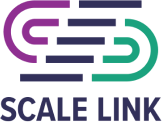Case study: How Byline Bank achieves reliable CRA impact through quarterly transactions
Byline Bank sought to find a reliable way to plan their CRA impact and results and provide continued support for LMI entrepreneurs and businesses owners in their assessment areas.
The scenario
Stephane Bamigbade, Little Bugs Learning Center. Photo courtesy of Allies for Community Business.
How Scale Link helped
Byline Bank is a neighborhood bank born and bred in Chicago. For 100+ years, Byline has provided a personal banking relationship to the neighbors, nonprofits, and businesses in the Chicagoland area. As a result, Byline has an ongoing commitment to support entrepreneurs and small businesses throughout its footprint. To achieve that, Byline was looking for a solution it could count on throughout the year to ensure capital flowed to all corners of its market, especially to businesses with under $1 million gross annual revenue and in LMI census tracts. Scale Link had the right answer. As a nonprofit marketplace that connects bank liquidity to communities in need, Scale Link had visibility to a pool of loans that it could turn into a predictable flow of loans for Byline. Byline set credit criteria, a quarterly purchase target, and worked with Scale Link to tailor a streamlined process that meets Byline’s internal needs and community goals. This commitment allows Scale Link to hold loans that fit their needs, ensuring measurable CRA impact with every purchase.
Scale Link’s process
1
After connecting with Byline Bank and learning about their CRA goals, EBA identified available loans and their footprint and credit box to determine if a transaction would be possible
Note: Loans in the Byline transaction came from Allies for Community Business (a4cb.org).
2
Byline committed to purchase loans on a quarterly basis to support their CRA goals. Scale Link provided legal documents to Byline Bank for review for the initial transaction.
Note: Scale Link has a standard nonrecourse master participation agreement with each CDFI that governs the initial participation transaction. CDFIs retain servicing and collections responsibility. Scale Link allows banks to purchase the loans through transfer of its interest to the bank.
3
Byline Bank and Scale Link reviewed the available loans using a loan tape with key risk variables as well as a third-party risk rating[1]. After loans were narrowed, key documents for each loan were provided to review in Scale Link’s online portal.
CDFIs lend to businesses outside a bank’s typical credit box. Scale Link encourages banks to size their credit box in light of the total capital at risk as opposed to the individual risk of each transaction.
4
Scale Link confirmed the final portfolio and price, then prepared all documents and set a closing date.
5
Scale Link sent formal acknowledgement letters with CRA qualification information for both the loan purchase and grant request to use in Leaders Bank’s CRA evaluation.
6
Scale Link provides monthly transaction reports and a single wire of all payments each month.
Results
$100,047
in microloans purchased
$20,000
grant capital to Scale Link
$5,862
average loan size
$1M or less
gross annual revenue for all loans.
All loans were in LMI census tracts.
37
small businesses supported
Juan Betancourt, ArePA George. Photo courtesy of Allies for Community Business.
CRA details
By taking on the risk of loan loss and providing capital, Byline Bank makes a direct and consequential impact. The purchase of small business loan participations is unequivocally considered part of a banks CRA lending in the interagency Q&A.[2] The location of these loans within Byline’s assessment area provides positive consideration, regardless of if they were directly originated by the bank or purchased. The interagency CRA Rule indicates that a bank’s lending performance considers both originations and purchases of loans.[3] Donations provided meet the definition of qualified investment in the interagency CRA rules, and promote economic development in Byline’s assessment area, which in turn provides positive CRA consideration.
[1] Third party ratings are provided by PayNet, an Equifax Company, that manages a database of 23 million financial contracts and over $1.5 trillion in loan value. The PayNet AbsolutePD uses borrower information and macroeconomic & industry factors to forecast 8 quarters into the future.
[2] CRA Guidance ___.22(a)(2)-6
[3] 12 CFR 25.22(a)




